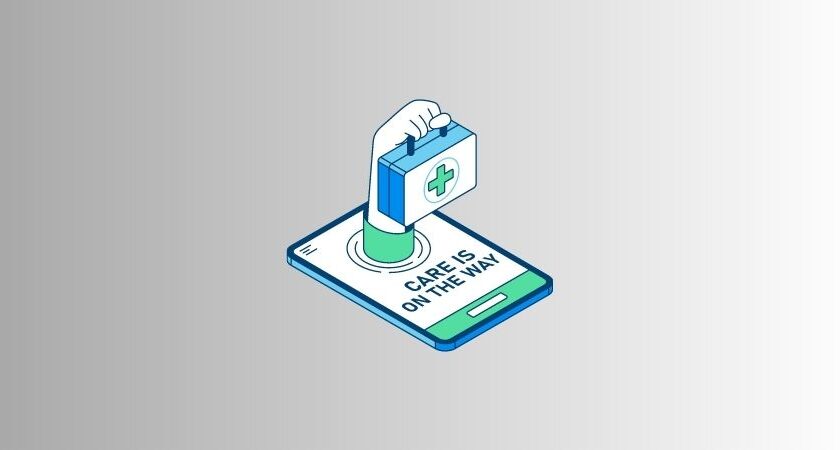In recent years, advancements in technology have transformed various industries, and healthcare is no exception. One of the most notable developments in this regard is telemedicine, which has revolutionized the way patients access healthcare services. Telemedicine, also known as virtual healthcare or telehealth, involves the delivery of medical services remotely, using telecommunications technology such as video conferencing, mobile apps, and online platforms.
This blog explores the future of telemedicine and how this innovative approach is fundamentally changing the healthcare landscape, offering numerous benefits to patients and healthcare providers alike.
The Rise of Telemedicine
Telemedicine has experienced a meteoric rise in popularity, thanks to its ability to overcome geographical barriers and provide healthcare access to underserved populations. The convenience it offers to patients, who can now consult with healthcare professionals from the comfort of their homes, has been a significant driver in its widespread adoption.
This trend is likely to continue, with more patients embracing virtual healthcare as a viable and efficient option for their medical needs.
Improved Access to Healthcare
One of the most significant advantages of telemedicine is its potential to improve access to healthcare services. In rural or remote areas where medical facilities may be limited, telemedicine allows patients to connect with specialists and receive expert advice without the need for extensive travel.
Additionally, individuals with mobility issues or chronic conditions find telemedicine to be a lifeline, as it enables them to access medical care regularly, enhancing overall health outcomes.
Cost-Effectiveness
Telemedicine has the potential to significantly reduce healthcare costs for both patients and providers. Virtual consultations eliminate the need for in-person visits, saving time and money on transportation and hospital expenses. Moreover, by preventing unnecessary emergency room visits, telemedicine helps reduce the burden on healthcare systems, promoting more efficient resource allocation and cost-effective care.
Enhanced Patient Engagement and Compliance
Telemedicine fosters a stronger patient-provider relationship by enabling frequent and convenient communication between healthcare professionals and patients. With virtual consultations, patients can easily follow up on their treatment plans, discuss concerns, and receive real-time feedback.
This increased engagement leads to better patient compliance with treatment protocols, ultimately improving health outcomes and reducing the risk of hospital readmissions.
Technological Advancements and Integration
As technology continues to advance, telemedicine is likely to incorporate more sophisticated tools, enhancing its capabilities further. Wearable devices, remote patient monitoring systems, and artificial intelligence (AI)-powered diagnostics are just a few examples of how telemedicine is becoming more sophisticated and accurate.
These technologies enable continuous data collection, allowing healthcare providers to deliver more personalized and proactive care.
Mental Health Revolution
Telemedicine is playing a crucial role in the mental health landscape, addressing the rising demand for mental health services. With the anonymity and convenience of virtual consultations, individuals are more likely to seek professional help for mental health concerns.
Telepsychiatry and online counseling have proven to be effective ways to deliver mental health support, particularly during times of crisis, such as the COVID-19 pandemic.
Telemedicine in Disaster Response and Emergencies
Telemedicine has proven invaluable in disaster response and emergency situations. When natural disasters strike, medical facilities may become inaccessible or overwhelmed, making it challenging for patients to receive timely care.
In such scenarios, telemedicine enables medical professionals to provide remote consultations, triage patients, and coordinate with on-ground teams, ensuring better coordination and more efficient healthcare delivery.
Privacy and Security Concerns
While telemedicine offers tremendous benefits, it also raises concerns about data privacy and security. As patient information is transmitted and stored electronically, healthcare providers must adopt robust encryption protocols and stringent data protection measures to safeguard patient confidentiality. Addressing these concerns is critical to maintaining patient trust and ensuring the widespread adoption of telemedicine.
Conclusion
The future of telemedicine is undeniably bright. As technology continues to evolve, virtual healthcare will continue to reshape the way we access and receive medical services. Improved access to healthcare, cost-effectiveness, enhanced patient engagement, and the integration of advanced technologies will drive the widespread adoption of telemedicine across the globe.
While challenges like data privacy and security remain, they can be addressed through a collaborative effort involving healthcare providers, technology companies, and policymakers.
As telemedicine gains momentum, it will undoubtedly play a transformative role in delivering accessible, efficient, and patient-centered healthcare for generations to come.
